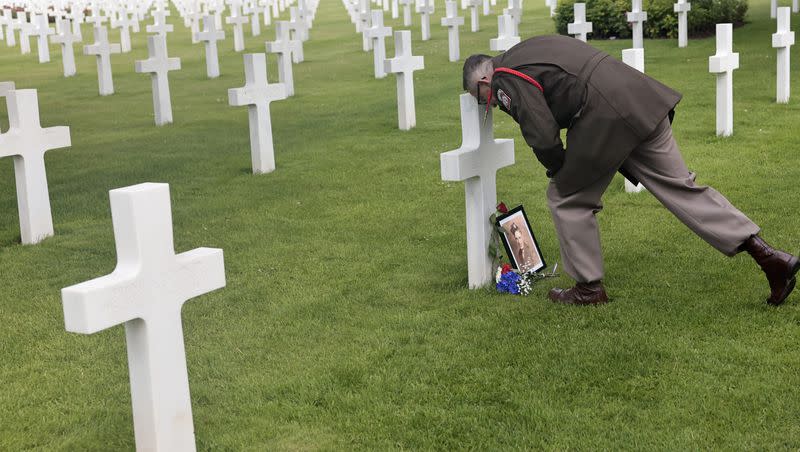Opinion: Seeing the sacrifices of D-Day through veteran eyes

Frank DeVita’s story is one of many inspiring memories from the men who landed on the beaches of Normandy 79 years ago this Tuesday. But that fact doesn’t detract from his story. Rather, it makes the enormous sacrifices of that day even more remarkable.
DeVita was a 19-year-old Gunner’s Mate 3rd Class aboard the USS Samuel Chase. His job was to ride in one of the many troop transport ships that delivered men to Omaha Beach amid terrific artillery fire, then to lower the ramp that would allow them to exit the ship and run onto the beach, desperate to establish a beachhead on the European continent.
Pre-dawn bombing raids had failed to effectively hit the fortified positions German soldiers had established above Omaha Beach. That allowed the Germans to riddle incoming boats with relentless machine gun fire.
As DeVita said, while choking back tears on a video at History.com, he could hear bullets pounding the ramp as they approached the beach, like the staccato clacking of a typewriter. As long as the ramp was up, it was a shield.
“I figured in my mind, when I drop that there ramp, the bullets that are hitting the ramp are going to come into the boat. So I froze,” he said.
Only when the boat’s coxswain yelled and swore at him to lower the ramp did he do his duty.
“I dropped the ramp,” he said. “The first seven or eight, nine, 10 guys went down like you’re cutting down wheat.”
That was his first trip to the beach. By the eighth trip that day, he was carrying the wounded and dead off the shore and back to the main ships.
He remembers those men, “18, 19, 20 years old. They were too young to vote, but they weren’t too young to die.”
DeVita describes a cemetery near the beach. “Pick out any tombstone,” he said. “Six feet down lies a soldier or a sailor, probably 20 years old, who gave his life for his country. That’s my hero.”
The remarkable thing about the Normandy invasion is that the soldiers involved fully understood what they were doing. Nearly a decade ago, Earl Howard Clements of Cottonwood Heights, who was a sergeant during D-Day, told the Deseret News he learned about the pending attack when his ship was heading toward Port of Southampton, England.
Related
“Half of us were going to be killed. They told us that. But everybody went anyway,” he said, his voice breaking as he began to cry. “They didn’t hesitate a minute, and neither did I.”
D-Day was a pivotal moment in World War II, not just for U.S. soldiers, but for the allied forces and the world. Officially known as “Operation Overlord,” the invasion included more than 195,000 personnel from eight allied nations on 7,000 ships and landing craft, with about 133,000 from the United States, Britain and its commonwealth landing on June 6, 1944, according to the Dwight D. Eisenhower Presidential Library.
Casualties that day, dead and wounded, numbered 10,300. That is difficult to comprehend at a time when the entire 20-year war in Afghanistan resulted in 22,311 U.S. casualties. D-Day has been called the largest invasion force in human history. It may be the greatest single example of selfless sacrifice, as well.
Because of the bravery and willingness of those men that day, the world has not faced a similar pivot point of such great importance since then.
Those who survived D-Day and the rest of World War II are rapidly dwindling. The U.S. Department of Veterans Affairs said only 167,284 of the 16 million who served in that conflict remained alive in 2022. Those numbers are expected to fall below 100,000 next year.
As the website of the National WWII Museum says, “Every day, memories of World War II — its sights and sounds, its terrors and triumphs — disappear.”
But the remembrance and gratitude of today’s Americans for that generation must never vanish. Neither should the resolve to follow their selfless example whenever circumstances make it necessary again.

